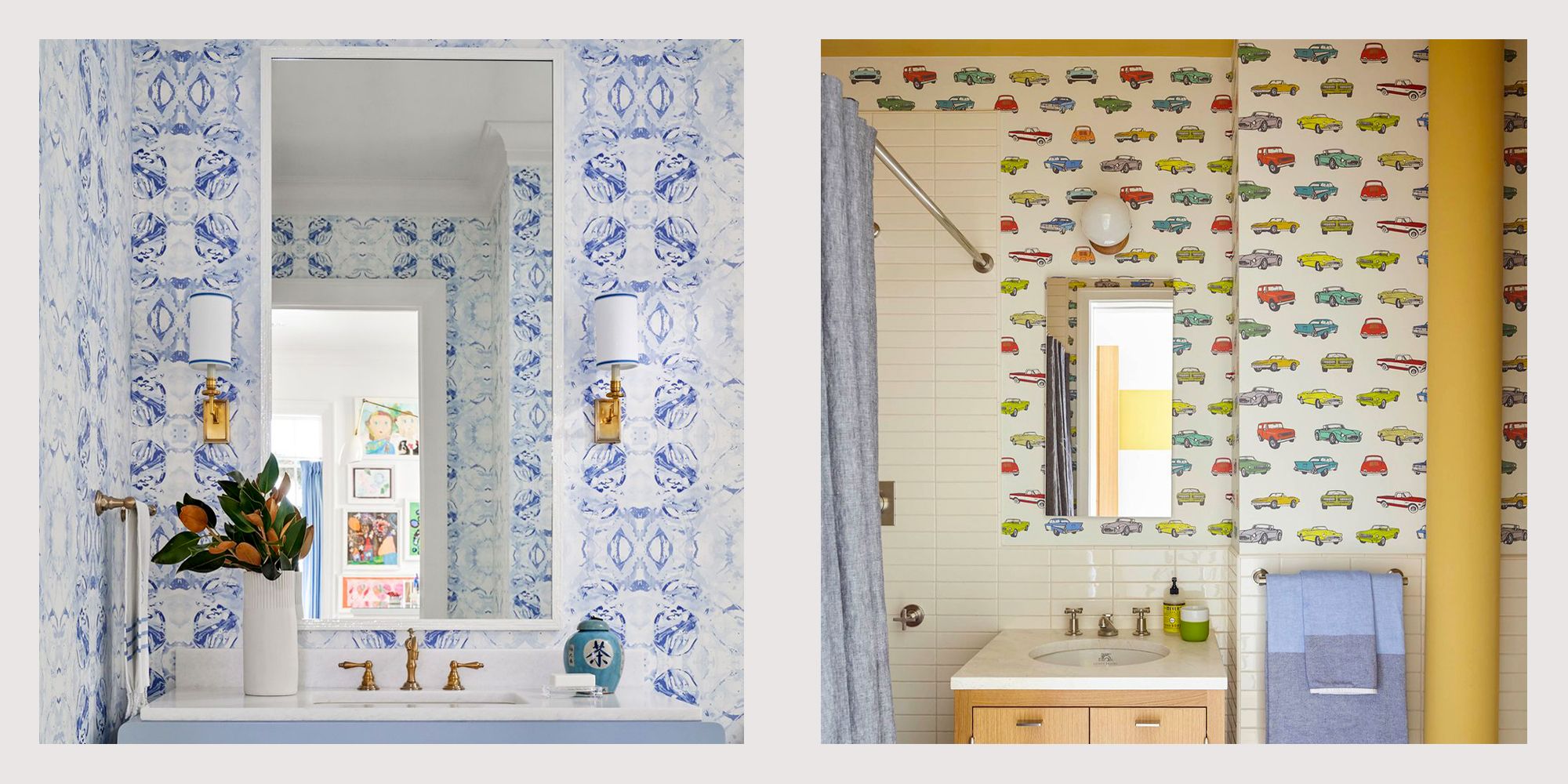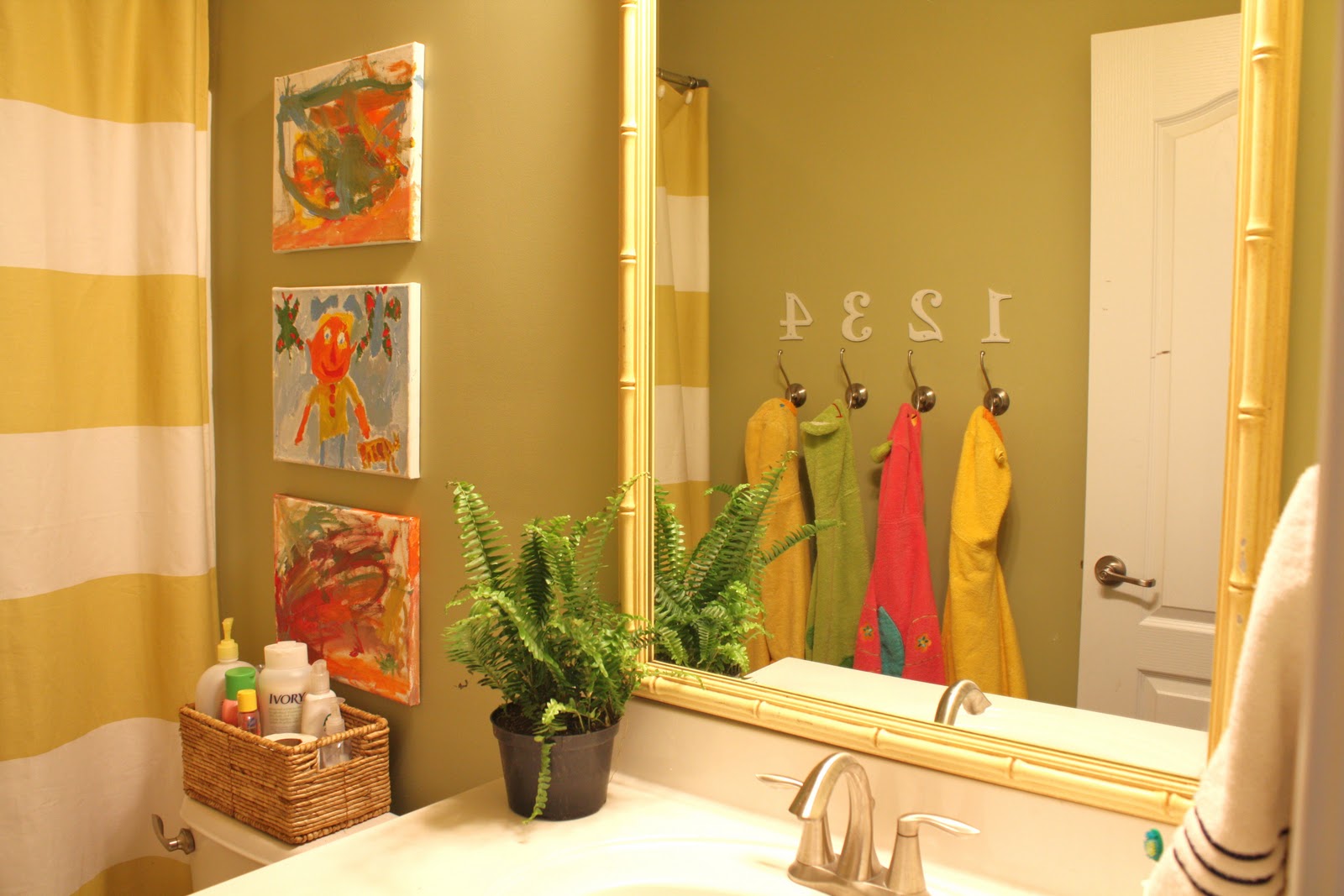Creating a Functional Space

Transforming a shared bathroom into a haven of efficiency and order requires careful planning and a touch of ingenuity. By maximizing space and functionality, you can create a bathroom that caters to the unique needs of your children while minimizing morning chaos.
Designing a Space-Saving Layout
A well-designed layout is the cornerstone of a functional shared bathroom. Consider these tips to optimize space and functionality:
- Maximize Vertical Space: Utilize wall-mounted storage solutions, such as floating shelves and cabinets, to free up floor space.
- Choose a Compact Bathtub: If space is limited, opt for a smaller bathtub or a shower-tub combination that saves valuable floor space.
- Install a Corner Sink: A corner sink can save space and create a more open feel in a small bathroom.
- Optimize Storage: Incorporate storage solutions under the sink, behind the toilet, and in unused corners to keep clutter at bay.
Essential Bathroom Fixtures and Accessories
A well-equipped shared bathroom requires a carefully curated selection of fixtures and accessories:
- Dual-Sink Vanity: This essential fixture offers ample counter space and two sinks, allowing children to get ready simultaneously, reducing morning rush hour chaos.
- Large Mirrors: Strategically placed mirrors create an illusion of more space and make the bathroom feel brighter.
- Storage Baskets: Baskets can be used to organize towels, toiletries, and toys, keeping the bathroom tidy and accessible.
- Towel Bars: Provide ample towel bars to accommodate each child’s towels and ensure they have a designated place to hang them.
- Shower Caddy: A shower caddy allows children to keep their shampoo, conditioner, and other shower essentials within easy reach.
Benefits of a Dual-Sink Vanity
A dual-sink vanity is a game-changer in a shared bathroom. Its benefits are undeniable:
- Reduced Morning Chaos: Two sinks mean less waiting and a smoother morning routine for everyone.
- Increased Efficiency: Children can get ready simultaneously, saving time and minimizing stress during busy mornings.
- Enhanced Organization: With two sinks, each child can have their own dedicated space for their toiletries and grooming supplies.
The Importance of Adequate Storage
Storage is crucial in a shared bathroom to maintain order and keep things tidy. Here are some creative storage ideas:
- Under-Sink Cabinets: Utilize the space under the sink for storing cleaning supplies, extra towels, and toiletries.
- Wall-Mounted Shelves: Floating shelves provide a stylish and space-saving solution for displaying decorative items and storing toiletries.
- Over-the-Toilet Storage: Install shelves or a cabinet over the toilet to maximize vertical space and keep frequently used items within easy reach.
- Storage Baskets: Use baskets to organize towels, toiletries, and toys, keeping the bathroom neat and organized.
- Ladder Shelf: A ladder shelf provides a unique and functional way to store towels, baskets, and decorative items.
Encouraging Independence: Kids Shared Bathroom Ideas
A shared bathroom can be a space for learning and growth, particularly when it comes to fostering independence in children. By creating a well-organized and inviting environment, you can empower your kids to take ownership of their personal care routines.
Creating Designated Spaces
Providing each child with their own dedicated space within the shared bathroom promotes a sense of ownership and encourages them to keep their belongings organized. This can be achieved through various methods:
- Separate Shelves: Designate shelves for each child, allowing them to store their toiletries, hairbrushes, and other essentials. You can use baskets, containers, or labels to further organize the items.
- Hooks: Install hooks on the wall for hanging towels, bathrobes, and backpacks. This not only keeps these items off the floor but also encourages children to put them away after use.
- Drawers: If space permits, consider incorporating drawers into the bathroom vanity or adding a small dresser. These can be used to store items like hair styling tools, makeup, or personal hygiene products.
Visual Organization Systems
Visual cues are essential for young children, especially when it comes to organization. Implementing a fun and engaging system can make the process of tidying up more enjoyable:
- Color-Coding: Assign a specific color to each child and use matching containers, labels, or even colored tape to distinguish their belongings. This creates a visual distinction that helps children quickly identify their items.
- Labels: Use clear and concise labels for each container, drawer, or shelf. Children can easily identify where their items belong, even if they can’t read yet.
- Personalized Storage Containers: Allow children to personalize their storage containers with stickers, drawings, or their names. This makes the bathroom feel more like their own space and encourages them to take pride in keeping it tidy.
Teaching Basic Hygiene and Etiquette
Developing good hygiene habits and bathroom etiquette is crucial for children’s health and well-being. Here are some age-appropriate activities to promote independence:
- Interactive Charts: Create a visual chart outlining the steps of a basic hygiene routine, such as brushing teeth, washing hands, and showering. Use pictures or simple drawings to make it engaging for younger children.
- Role-Playing: Practice bathroom etiquette with your children through role-playing scenarios. This could involve teaching them how to use the toilet properly, how to dispose of waste, and how to clean up after themselves.
- Reward Systems: Use positive reinforcement to encourage good habits. This could involve stickers, small rewards, or verbal praise for completing their hygiene routine independently.
Encouraging Clean-Up Habits
Making clean-up fun and engaging is key to encouraging children to take responsibility for their shared space. Here are some tips:
- Set a Timer: Make cleaning up a game by setting a timer and challenging children to put away their belongings before the time runs out.
- Make it a Routine: Incorporate clean-up as part of the daily routine, such as right after bath time or before bedtime. This creates a consistent habit.
- Create a Cleaning Chart: Design a chart with pictures or symbols representing different cleaning tasks. Children can check off each task as they complete it.
Adding Personality and Fun
Transforming a shared bathroom into a space that kids love can be an exciting journey! This is where you can unleash your creativity and incorporate elements that reflect their unique personalities and interests.
Creating a Playful and Colorful Space, Kids shared bathroom ideas
A shared bathroom doesn’t have to be boring or sterile. Injecting vibrant colors and playful designs can create a space that feels inviting and fun. Consider using bright, bold colors on the walls, such as a sunny yellow or a cheerful turquoise. You can also add pops of color through towels, rugs, and shower curtains.
For example, a vibrant green shower curtain with playful jungle animals can create a whimsical atmosphere, while a bright blue rug with colorful fish can add a touch of underwater magic.
“When you’re trying to create a space that feels fun and welcoming, it’s all about adding elements that spark imagination and create a sense of joy.”
Incorporating Children’s Interests and Hobbies
Think about the things your children love – their favorite animals, sports, books, or hobbies. You can then weave these interests into the bathroom decor.
For example, if your child loves dinosaurs, consider incorporating dinosaur-themed towels, rugs, or even a wall mural. If your child loves space exploration, you could use a space-themed shower curtain or a set of star-shaped bath mats.
- Use Wall Decals: These are a great way to add a personal touch without making a permanent change. Choose decals that reflect your children’s interests, such as animal silhouettes, planets, or sports figures.
- Display Artwork: Encourage your children to create their own artwork and display it in the bathroom. This can be a great way to add a personal touch and make the space feel more welcoming.
- Incorporate Fun Storage Solutions: Use colorful baskets or bins to store toys, toiletries, and other bathroom essentials. You can even find storage solutions shaped like animals or other fun characters.
Adding Fun and Engaging Activities
A shared bathroom can be a space for fun and engagement, not just for getting clean. Consider adding a few fun elements to make the experience more enjoyable.
- Create a Reading Nook: A small shelf or basket filled with books can encourage kids to relax and unwind in the bathroom. Consider having a few age-appropriate books available for bath time reading.
- Add a Fun Mirror: A mirror with a unique shape or design can add a playful touch. You can even find mirrors with built-in games or puzzles.
- Include a Small Play Area: If space allows, consider creating a small play area within the bathroom. This could be a designated spot for a few toys or games that can be enjoyed during bath time.
Using Durable and Easy-to-Clean Materials
In a shared kids’ bathroom, durability and easy cleaning are essential. Opt for materials that can withstand spills, splashes, and the inevitable wear and tear that comes with kids.
- Tile Floors: Tile floors are easy to clean and can withstand spills and splashes. Choose a tile with a non-slip surface for safety.
- Waterproof Paint: Use waterproof paint on the walls and ceilings to prevent moisture damage. Consider a semi-gloss finish for easy cleaning.
- Vinyl Flooring: Vinyl flooring is another durable and easy-to-clean option. It’s also available in a wide range of colors and patterns.
- Waterproof Cabinets: Choose waterproof cabinets for storing toiletries and other bathroom essentials.

